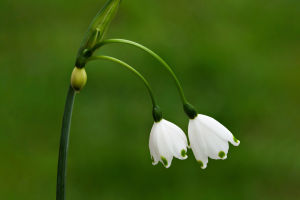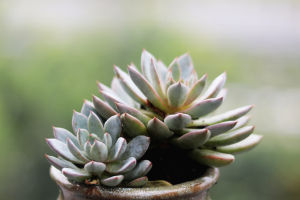The harebell, known scientifically as Campanula rotundifolia, is a charming wildflower that adds a touch of elegance and serenity to natural landscapes.
With its delicate, bell-shaped flowers and graceful stems, the harebell is a favorite among wildflower enthusiasts.
So Lykkers! Let’s explore the enchanting world of harebells, their unique characteristics, and the reasons they are celebrated in gardens and meadows across the world.
Unique Appearance
Harebells are known for their striking bell-shaped flowers that come in shades of blue, violet, or sometimes white. The flowers typically hang delicately from slender, wiry stems, giving the plant a graceful, almost ethereal appearance. The leaves of the harebell are rounded and often form a rosette at the base of the plant, adding to its visual appeal. The combination of the soft, pendulous blooms and the slender stems creates a beautiful contrast that enhances any garden or wildflower meadow.
Habitat and Growth
Harebells are native to a variety of regions, including North America, Europe, and parts of Asia. They thrive in a range of habitats, from rocky hillsides and mountain meadows to grassy fields and open woodlands. The plant is well-suited to well-drained soils and full sunlight, making it a resilient and adaptable addition to many types of landscapes. Harebells are often found in naturalized settings, where they contribute to the overall beauty and biodiversity of the area.
Garden Appeal
In garden settings, harebells are valued for their beauty and low-maintenance requirements. They make excellent additions to cottage gardens, rock gardens, and perennial borders. Their graceful appearance pairs well with other wildflowers and ornamental grasses, creating a natural, relaxed garden aesthetic. Harebells are also attractive to pollinators such as bees and butterflies, adding ecological value to your garden. Planting harebells can help support local wildlife and enhance the overall health of your garden ecosystem.
Symbolism and Folklore
The harebell has been celebrated in various cultures and folklore. In some traditions, it symbolizes humility and gratitude, reflecting the plant’s modest but captivating presence. The delicate blooms have also been associated with the mystical and magical, often appearing in stories and legends about the natural world. Their charming appearance and gentle demeanor make them a symbol of the beauty found in nature’s more subtle creations.
Growing Harebells
Growing harebells in your garden is relatively straightforward. They prefer well-drained soil and full sunlight, although they can tolerate partial shade. The seeds can be sown directly into the soil in the spring or fall, and the plants will typically begin to flower in their second year. Harebells are generally hardy and can withstand a variety of weather conditions, making them a great choice for gardeners looking for a resilient and beautiful wildflower.
Growing Harebells with Success: Tips and Tricks for Plant Care
Video By Gardening Story
Harebells, with their delicate bell-shaped flowers and graceful stems, are a testament to the understated beauty of wildflowers. Their adaptability, low maintenance, and ecological benefits make them a valuable addition to a variety of landscapes. Embrace the charm of harebells and let their soft, captivating blooms enhance the beauty of your garden and the natural world around you.


